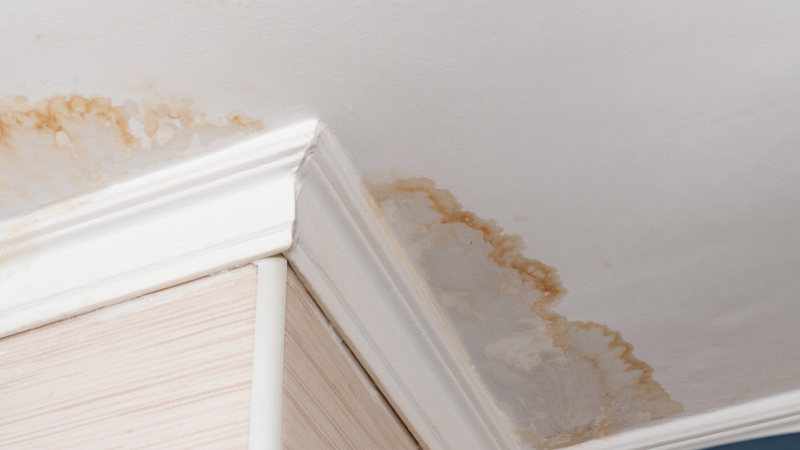Exactly How to Help Prevent Water Damage in Your Bathroom
Exactly How to Help Prevent Water Damage in Your Bathroom
Blog Article
What're your opinions with regards to How to Repair and Prevent Bathroom Water Damage?

The bathroom is incredibly susceptible for damp build-up as well as prospective water damage because of the regular use of water in it. This short article provides easy evaluation techniques to help spotting water damage hazards.
The frequent use of water in the bathroom makes it extremely vulnerable for moist accumulation and potential water damages. By evaluating it on a regular basis, you can decrease water related damages.
The adhering to collection of assessments is simple to carry out and should be done once in every 3 months in order to maintain your shower room in good shape and to stop possible water problems triggered by the tub, the shower, pipe joints and plumbing, sinks, closets, as well as the toilet
Do not neglect performing these evaluations as well as be extensive while doing them. Remember that these straightforward examinations can conserve you a great deal of money by offering early signs for water damages
Sinks as well as Cabinets
Sinks and closets are revealed to dampness as well as moisture everyday and are frequently overlooked. Evaluate consistently under the sink as well as on the counter top above it. Fix any type of drip in the trap as it may suggest drain troubles. Browse the sink, sluggish draining pipes might suggest an obstructed drainpipe. Replace sink seals if they are cracked or loosened.
Bath tub as well as Shower
The shower and bath tub need unique interest and also maintenance. Check the ceramic tiles and change if cracked. Make certain that there is no missing grout in between the floor tiles. Examine and also replace split caulking at joints where the walls satisfy the flooring or the bath tub. Clogged drains pipes and also pipes issues will certainly avoid the bath tub from drying and might show serious issues under the bathtub. Speak with a specialist immediately to prevent structural damage. Take notice of discolorations or soft locations around the bathtub wall surfaces as they may suggest an internal leakage.
Plumbing
Signs for water damage are difficult to detect considering that many pipelines are installed inside the walls.
Pay unique attention to floor covering and walls dampness as well as discolorations as they may suggest an invisible plumbing issue. Check moisture degrees in adjacent rooms also.
The Commode
The toilet is a prone water joint. Check the water lines as well as look for leaks around the bathroom seat, in the tube, as well as under the water container. If you identify any indications of wetness on the flooring around the toilet, check for leaks in the toilet rim as well as container seals.
Realize that hanging commode dish deodorants enhances the possibilities for obstructions.
Water Damage Signs In The Bathroom To Avoid Cleanup
Musty smell
This is one of the easiest signs to catch because musty smells are so odorous. The damp, earthy, moldy smell should be a big red flag. The smell will develop when moisture gets trapped in surfaces, and begins to facilitate mold growth. Leaking pipes under cabinets, inside walls, and behind shower fixtures will cause moisture to stay trapped and not dry, which will lead to mold growth and spread. As soon as you notice any musty smells in your bathroom, have it checked for hidden water damage and cleanup signs.
Visible mold
If the smell isn’t there to give it away, sometimes you will actually see mold growth. Finding mold in your bathroom is a serious problem, because mold is very harmful to your health. By the time mold growth is visible, it also means that water damage has already occurred and been present for some time. The only way the mold problem can be resolved is to find the source of the moisture and get it stopped. To safely and adequately remove mold, you need to have professionals handle the remediation. Do not waste any time in getting mold problems addressed, fixed, and sanitized so that you can protect you and your family from the many respiratory symptoms caused by mold exposure.
Damaged floors
Bathroom floors should be able to withstand some exposure to water while still remaining in good condition. However, when excess exposure or water leaks occur, they will begin to damage even the most water-resistant flooring. If you notice any cracking, bubbling, staining, or warping on your bathroom floors, there is probably a water leak somewhere causing the distortion. If you notice areas of the floor have become softer, or even have a spongy feeling, there is probably damage to the subfloor. Subflooring is typically made up of plywood. When plywood is exposed to water or moisture, it will absorb it. Once it has become saturated, the weight of the excess water will cause the wood to swell and soften. Check the floors in your bathroom frequently to catch any of these sings before they lead to damaged subflooring.
Changes on walls
When water leaks behind walls, it will cause changes in the drywall. Peeling plaster, blistering paint, and soggy wallpaper are all good indicators that excess water is building up behind the wall. Water leaking behind drywall will cause it to swell and be soft to the tough. If you start to notice gaps along the trim of your walls, or where tile meets the wall, it could also be a strong indicator that there is a leak behind the wall. Any changes, distortion, or damage on the walls should be evaluated as soon as you notice it to prevent further water damage and cleanup.

We had been shown that article on How to Prevent Bathroom Water Damage from someone on another web blog. If you enjoyed reading our page please be sure to share it. Thanks so much for taking the time to read it.
Top Article Report this page